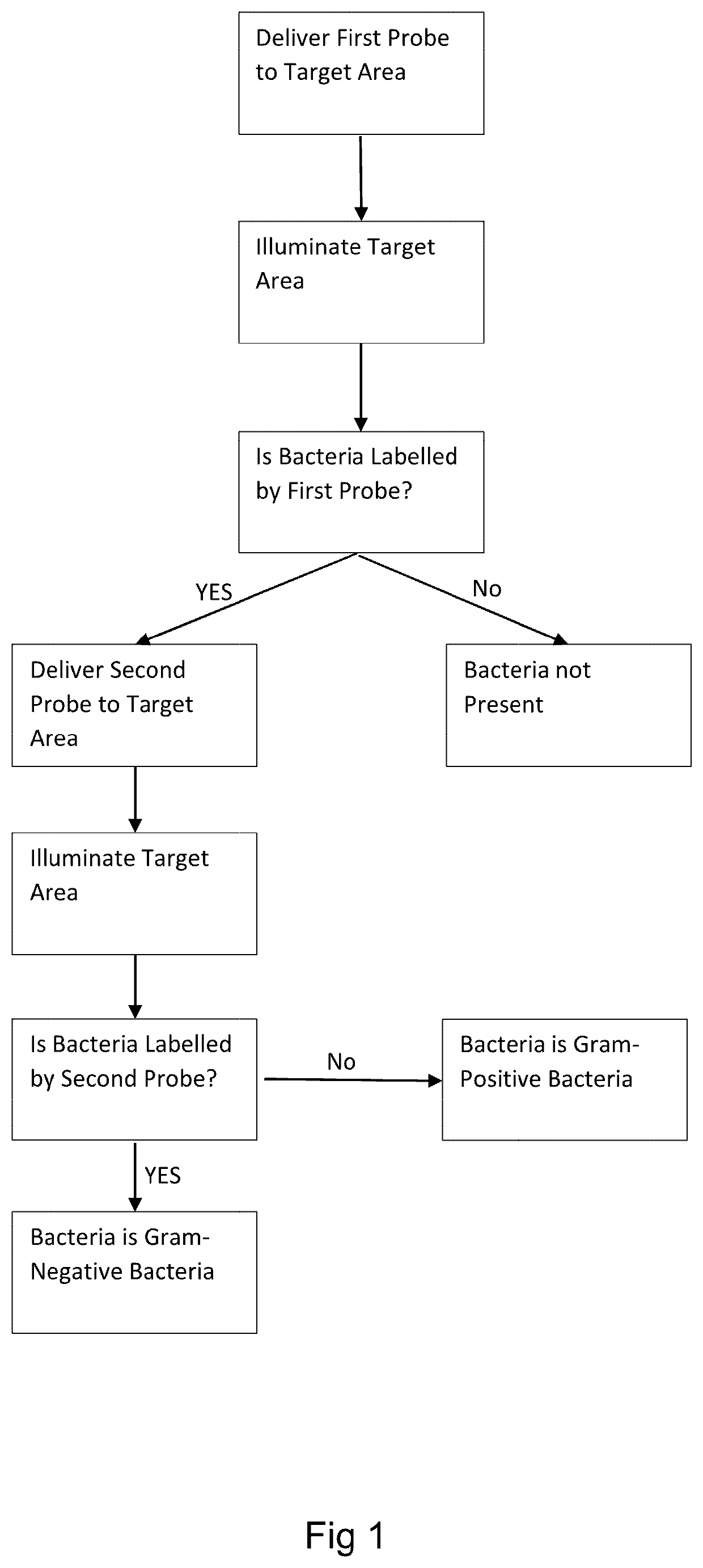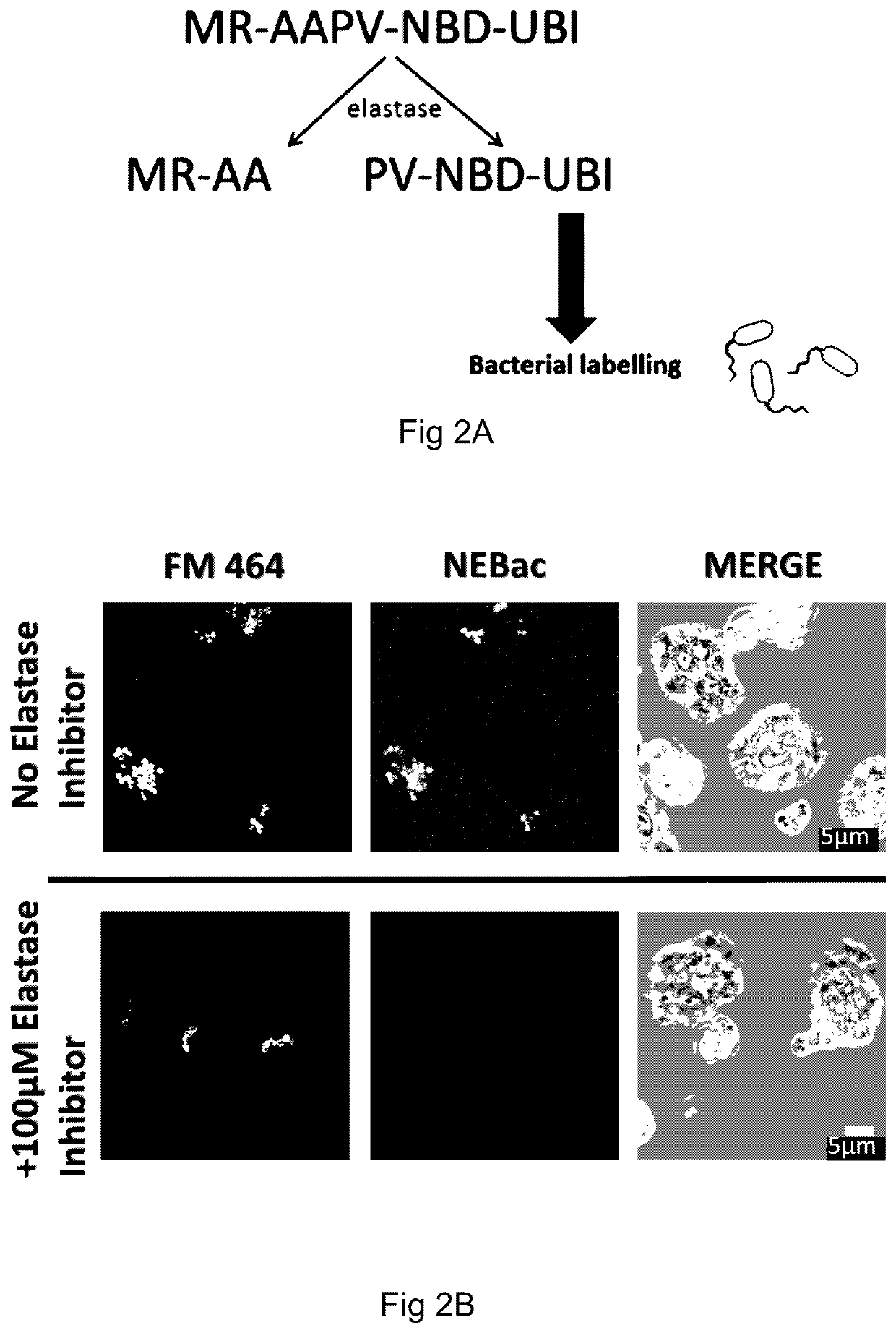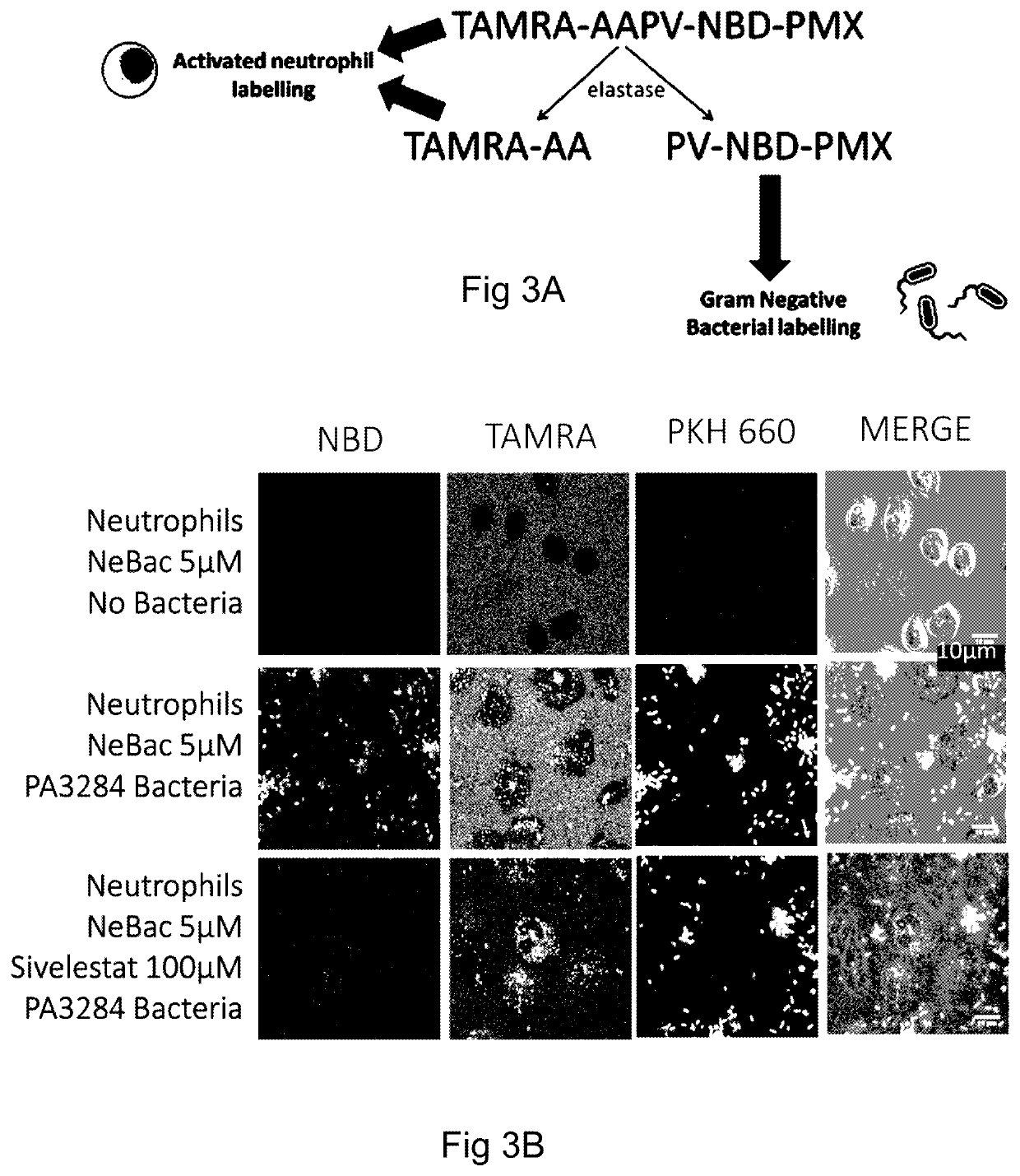Molecular probes for detecting gram-negative bacteria in vitro and in vivo
a technology of gram-negative bacteria and probes, applied in the field of molecular probes, can solve the problems of inability to accurately diagnose vap, patient especially vulnerable to haemophilia, and low detection efficiency of vap, so as to achieve little or no effect on the binding properties of gram-negative bacteria and increase the stability of the polymyxin moiety
- Summary
- Abstract
- Description
- Claims
- Application Information
AI Technical Summary
Benefits of technology
Problems solved by technology
Method used
Image
Examples
first example
Method
[0157]In an example of the invention, a detailed method will now be described. This is an example embodiment of the invention and does not limit the scope of the invention.
[0158]A microdose of 500 μL of a first probe (comprising 10 μg of probe) is delivered to a target area within the lungs of a patient using a bronchoscope. The first probe comprises three ubiquicidin fragments (UBINle, acting as binding moieties) and three NBD fluorophores, and therefore is adapted to bind to bacteria and / or fungi specifically, rather than the native cells within the lungs of the patient.
[0159]Light of an appropriate wavelength (for example, around the excitation maximum of NBD, 488 nm) is delivered to the target area via a fiber-optic within the bronchoscope. Light from the target area is collected by a second fiber-optic within the bronchoscope and incident to a charge-coupled device (CCD) via a confocal optical arrangement or widefield arrangement. Images of the target area produced by the...
second example
Method
[0166]In an alternative method, a microdose of 500 μL of a first probe (comprising of 20 μg probe) comprising a TAMRA moiety (acting as a fluorescent quencher), a linker comprising the peptide sequence AAPV, an NBD fluorophore, and a ubuquicidin moiety (UBINle, acting as a binding moiety) is delivered to a target area of the lung of a patient and illuminated as per the first example method.
[0167]Fluorescence of the TAMRA only is indicative that no HNE is present in the target area, and that therefore the tissue within the target area is not inflamed. Fluorescence of TAMRA and NBD with no labeling of bacteria and / or fungi by the NBD is indicative of the presence of HNE (the linker has been cleaved by HNE to allow the NBD to fluoresce). Fluorescent labelling of human neutrophils by TAMRA is indicative of the presence of human neutrophils within the target area, and fluorescent labelling of bacteria and / or fungi by NBD is indicative of bacteria and / or fungi within the target area...
third example
Method
[0170]In a third example, a microdose of a first probe according to either the first or second example method and a microdose of a second probe comprising a polymyxin moiety and a malachite green fluorophore may be delivered at the same time. Alternatively, the second probe may comprise a cyanine dye such as cy3 or cy5, for example.
[0171]Accordingly, fluorescence of the first probe, the second probe, and, if the first probe of the second example method is used, the fluorescent quencher (TAMRA) can be analysed at once, and the presence of bacteria and / or fungi and, if bacteria is detected, whether that bacteria is gram-negative or gram-positive can be determined simultaneously.
Characterisation of Appropriate Probes to be Used in the Method of the Invention
PUM
| Property | Measurement | Unit |
|---|---|---|
| temperature | aaaaa | aaaaa |
| wavelength | aaaaa | aaaaa |
| optical density | aaaaa | aaaaa |
Abstract
Description
Claims
Application Information
 Login to View More
Login to View More - R&D
- Intellectual Property
- Life Sciences
- Materials
- Tech Scout
- Unparalleled Data Quality
- Higher Quality Content
- 60% Fewer Hallucinations
Browse by: Latest US Patents, China's latest patents, Technical Efficacy Thesaurus, Application Domain, Technology Topic, Popular Technical Reports.
© 2025 PatSnap. All rights reserved.Legal|Privacy policy|Modern Slavery Act Transparency Statement|Sitemap|About US| Contact US: help@patsnap.com



